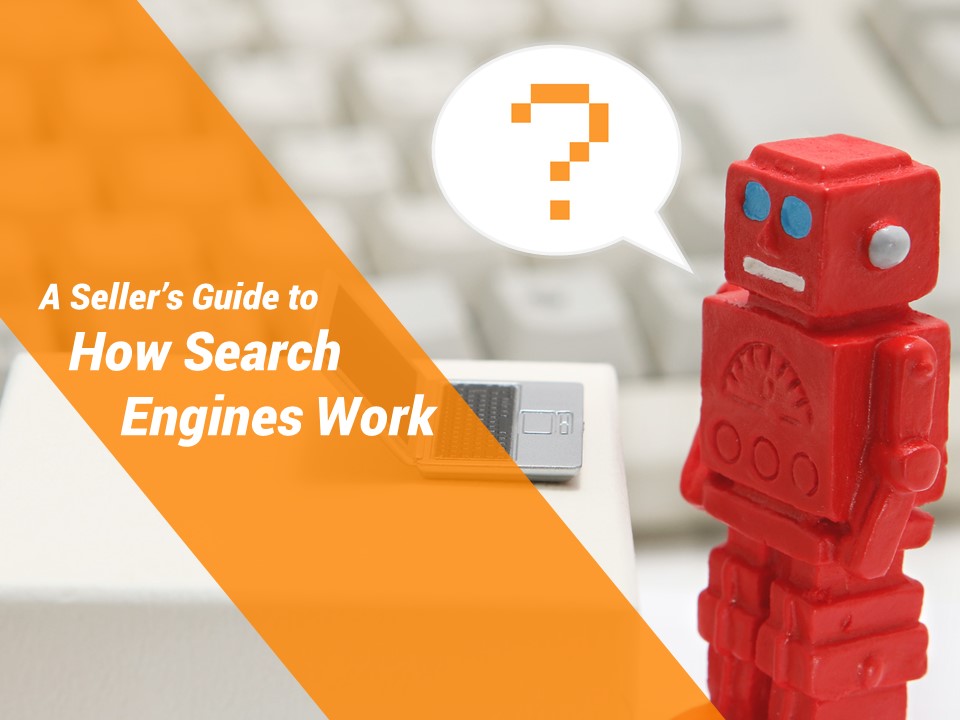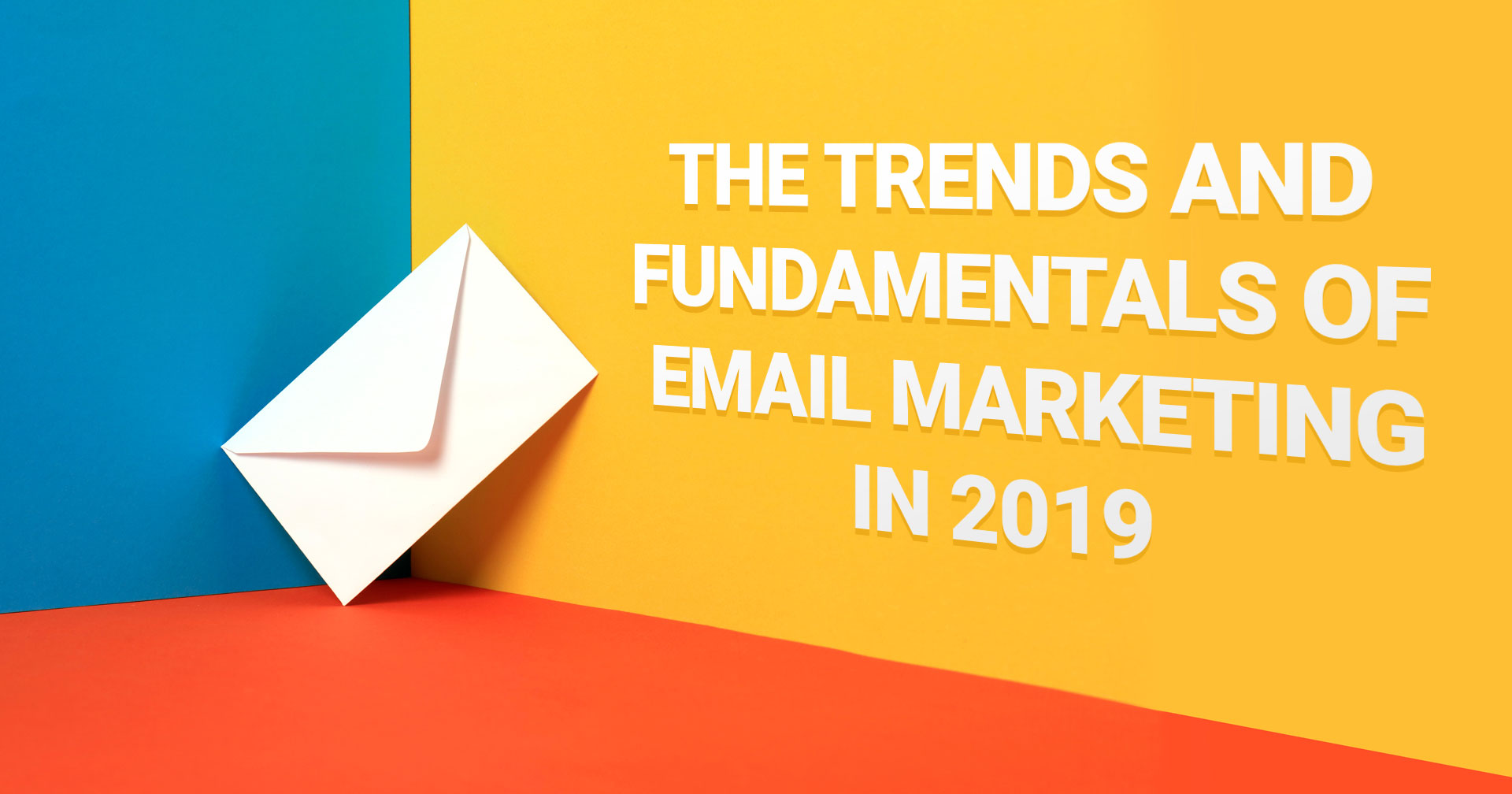
One key question that needs to be addressed by e-commerce businesses is whether to become authorized retailers for branded products. So, what is an authorized retailer, and what pros and cons do becoming one provide a reseller? Read on to find out!

One key question that needs to be addressed by e-commerce businesses is whether to become authorized retailers for branded products. So, what is an authorized retailer, and what pros and cons do becoming one provide a reseller? Read on to find out!


This snapshot of Newegg’s 2019 holiday promotion calendar is designed to give sellers a quick peek into the campaigns and available advertising that we’ll be running this holiday season. Newegg sellers will find ample opportunity to promote their products within these campaigns tailored for their unique categories and customer base. Make it official and lock down your promotions today! Read More

Looking for some guidance as you prepare for the peak holiday season?
Here’s a tip: Think beyond Black Friday.
With the explosive potential of each day from Thanksgiving through Cyber Monday, Black Friday is far from the only shopping holiday online sellers should prepare for.
This was one of several key takeaways from our recent webinar: Discover E-Commerce’s Best-Kept Secrets for Q4. The popular event combined knowledge from e-commerce and logistics experts at Newegg, ShipStation, and ChannelAdvisor to surface the best strategies for holiday selling in 2019.
In case you missed it, here are the highlights.

Looking for some guidance as you prepare for the peak holiday season?
Here’s a tip: Think beyond Black Friday.
With the explosive potential of each day from Thanksgiving through Cyber Monday, Black Friday is far from the only shopping holiday online sellers should prepare for.
This was one of several key takeaways from our recent webinar: Discover E-Commerce’s Best-Kept Secrets for Q4. The popular event combined knowledge from e-commerce and logistics experts at Newegg, ShipStation, and ChannelAdvisor to surface the best strategies for holiday selling in 2019.
In case you missed it, here are the highlights.

Did you know the 2019 holiday season is six days shorter than it was in 2018?
After experiencing one of the longest Thanksgiving-to-Christmas e-commerce seasons last year, sellers are now faced with the shortest on record. Turkey Day falls on November 28, taking the Cyber 5 for a ride into December. This shift has numerous implications that you’ll need to be prepared for.
First, be sure to budget accordingly. While year-over-year revenue may not be as strong in November, there’s a chance you’ll see it rise the following month.
In addition, ensure you have processes in place to handle larger order volumes later in the season. The shorter season means you’ll have less time to handle an increased number of orders, so preparing inventory and logistics is essential.
By the time Halloween costumes are put away on November 1, holiday promotions will already be in full force. That means you’ll need to be ready with advertising extra early this year — and have promotions in place well before Black Friday hits.
Why? Because if you aren’t ready to start encouraging online sales before November 28, you’ll be missing out on a mountain of revenue potential.
Although Cyber Monday is still the biggest online shopping holiday, consumers are starting earlier and earlier. Thanksgiving Day shopping grew 28% year-over-year in 2018 — the biggest increase ever — and experts expect that Thursday-to-Wednesday momentum will continue in 2019.
In fact, based on analysis of sellers using the ChannelAdvisor platform, the strongest year-over-year increase in sales last year occurred on Thanksgiving Eve. With this in mind, be sure your systems are prepared for an influx of traffic starting Wednesday afternoon.

Planning for peak season advertising can be so intensive that it’s easy to let product content fall by the wayside. And yet, that’s exactly what consumers are most interested in. Seven in ten shoppers want to learn about products via content instead of ads.
Set aside time to optimize your listings and personalize your campaigns. In addition to product titles, descriptions and bullets, be sure to prioritize your email campaigns since this is where most consumers get the information they need to make purchasing decisions.
When it comes to price-based promotions during the peak season, timing is everything. Our e-commerce experts suggest focusing on increased traffic starting November 1, followed by price drops as you get closer to Black Friday.
You can also maximize your profits by adjusting pricing intelligently. The last thing you want to do is drop to your bottom price right out of the gate. Customers will continue to shop throughout the holiday season, so you’ll need to have a bank of offers ready if you want to stay competitive well into December.
For example, minimum order promotions can be a great way to ensure your average order value is preserved as you entice customers to engage with your deals. If you can’t offer a discount — such as “spend $100, get 10% off — consider using a free shipping strategy to incentivize consumers to increase basket size.
If you’re selling on Amazon and eBay, you already have a great start. But based on the latest findings, it’s time to ramp up marketplace expansion.
Half of all worldwide online sales come from marketplaces, which jump during peak season. An impressive 60% of consumers plan to shop on marketplaces during the 2019 peak holiday season.
Yet another reason to expand your marketplace presence: Different marketplaces make it easy to extend different options for shipping and promotions, which allows you to extend a variety of offers to consumers. Consider options that allow you to reach wider audiences, such as Newegg, Walmart and Rakuten.
Just keep in mind that you’ll still want to maintain some individual value on each platform. It wouldn’t make sense to diversify your channels only to offer the same promotional deals on all of them.
The trick is to stagger your offers across various marketplaces to maximize your impact all season long. This “price exclusivity” will help ensure each placement is primed for success in the best way, and also keeps your partners happy.
If you really want to generate as much revenue as possible this season, expanding to global markets is key. More than 80% of retailers worldwide agree that cross-border e-commerce has been profitable, and 70% of consumers purchase from foreign sites.
Global selling can be highly lucrative during peak seasons, to say the least.
Of course, extending your reach across international borders can feel like a logistics nightmare when you’re just getting started.
To avoid issues and keep things running smoothly, the key is to focus on shipping software that can help manage international components such as international labels and customs forms.
This is also a time when you’ll want to overcommunicate delivery times, shipping costs and related information, since these are likely to take longer and cost more for overseas fulfillment.
Looking for more insights you can use to get a bigger competitive advantage in the Q4 holiday season for 2019? We have plenty! Leading experts go into greater detail on each of the above trends and strategies in our recent webinar. Watch it on-demand now for practical suggestions from ChannelAdvisor, ShipStation and Newegg.
This post was contributed by Cindy Puryear, Partner Marketing Manager for ChannelAdvisor.

In this installment of Newegg’s 2019 holiday blog series, we will discuss valuable improvements sellers can make to their product listings and seller store as well as some best practices for establishing your brand on marketplaces. Read More

In the previous installment in our SEO blog series, we learned just how search engines work. For this piece, we’ll cover SEO history: the trends and innovations that have shaped the internet and search engines into what we know today. Trust us when we say that with e-commerce, you can’t know where you’re going without knowing where you’ve been.
It’s novel to think what Archie (short for archive) set into motion back in 1990. As the world’s first search engine, it acted as the foundation for countless predecessors, algorithms, and companies to build upon and eventually develop into what the entire world recognizes as the internet.
SEO history begins in the 1990s with the rise of once-household names like Lycos, Alta Vista, Ask Jeeves, and Yahoo. These companies were some of the first to utilize the core elements we associate with modern search engines – the ability to crawl, index, and rank.
Today, these algorithm elements are ever-changing and top secret, but in these early “wild west” days of search engines, they were quite exploitable. This burgeoning but lax system was being heavily exploited by shady black hat techniques designed to manipulate rankings.
The following “cloaking” techniques of the time battled against the best intentions of search engines and made those early years of the internet a bit more disingenuous:
This is when sites try to trick bots by cramming keywords into text and meta tags in non-organic ways. During these days, a common trick was to lay white text over a white background and really pump up the term quantity.

Imagine you want to visit your favorite X-Files fan site, but you don’t remember the URL. So, you type “X-Files” into a search bar and click on the highest-ranking site. You quickly realize that this site has nothing to do with your beloved show and you have been instead directed to a scam site. This page gained its high rankings through keyword stuffing and false meta tagging for things facing search engine bots, but then redirects everyone to a different site, usually spam.
Black hats would join cabals of sites dedicated to boosting their rankings through backlinks. Imagine a giant network of sites who are just patting themselves on the back for their “valuable” content and gaining the reputable cred for doing so.
The turn of the millennium marks a major turning point in SEO history. The internet had become a much more popular, predictable, and safe place for its users. By this time, businesses developed a firm grasp of what the internet could be and began to invest heavily. Now we begin to see the monetization of search and the birth of paid ads – the primary funding driver behind today’s internet.
Google wasn’t the first to implement paid-search listings, but they certainly did it the best. The following are a few things implemented by Google during this time that allowed them to rise above the competition:
Google recognized how black hat SEO developers were gaming the system and watering down their vision of the internet. They created guidelines and actually punished webmasters who didn’t follow them. We won’t name names, but huge sites who didn’t play by Google’s rules were publically dragged to the back of the SERPs until they complied.
The first of many of Google’s game-changing algorithms. This ranks search results based on the “quality” of the content and is not reliant upon keywords. The quality is derived from backlinks from trustworthy and informative sites.
We take it for granted today but imagine looking up a pizza place on a search engine and being delivered results of restaurants hundreds of miles away. Beginning in 2004, Google began delivering results based upon geographic intent. This inclusion of relevant and usable individualized information helped connect users to the businesses near them – and helped Google sell more targeted advertising.
At this point in SEO history, we need to recognize Google as the victor of the great search engine wars. With the launch of their Panda, Penguin, and Hummingbird algorithms, former black hat efforts become obsolete, and Google has achieved its vision of a search engine dedicated to the user experience.
The successes and failures from Google and countless other companies in their pursuit of a better search engine have shaped the internet into what we see today.
Using our knowledge of past innovations and their lasting impact, SEO history foretells the following elements will be the driving forces shaping the internet of tomorrow:
The trend over the years has been to improve the algorithm behind search engine results pages (SERPs) to better predict and deliver the best answers for their users. While there are still many “legacy” elements on SERPs such as blue links, green URLs, and star links, the availability of these front-page slots is dwindling due to the expansion of the Knowledge Graph.
Content within the knowledge graph has expanded into videos, reviews, imagery, shopping links, music clips – the list goes on and on. With this dedication to sourcing the answers to user questions right on the SERP page, Google is essentially acting as a middleman and providing site content to users without the heavy burden of actually clicking a link. The algorithms behind this are so sophisticated that they can find relevant information within YouTube videos and play precisely where the video provides the answer.
All of these additions to the top SERPs can be seen as denying valuable real estate to quality sites in lieu of the valuable content within – essentially mining the gold without paying royalties to the landowners. However, another way to look at this is that Google is hunting to discover top content elements and reward its significance by driving impressions to it.

In 2018, mobile searches accounted for 60% of all search, in many ways thanks to Google leading a push for mobile content for the last decade. Since 2015, Google has been boosting the ranking of mobile-friendly (responsive) sites and has also been factoring page speed in their ranking algorithm since early 2018.
The embodiment of this drive for mobile-optimized content is AMP. Characterized by their lightning icon, Accelerated Mobile Pages (AMP) were dreamt up by Google and Twitter in 2015 to deliver a responsive, stripped-down HTML site to mobile users at unimpeded speeds. AMP sites are optimized for mobile, which means it loads faster. Faster loading sites are prioritized by algorithms and get higher rankings on SERPs. Pages ranked higher on SERPs gain more natural page views. What this boils down to is that if your site is not optimized for mobile viewing or speed, then you might already be dropping in page rank.

So far in this blog series, we have learned the details of How SEO Works and now the marketing behind SEO history and their prioritizations. For the next installment, we will shift our focus to best practices of search engine optimization and what content sellers should be creating.


This will be the first article for our series on Search Engine Optimization (SEO). Before we get too deep into the weeds with best practices and tips for SEO, we thought we should cover the fundamentals. This blog’s aim will be to outline the foundations of how search engines work before we later build up to an SEO plan.
Search engines such as Google, Yahoo, Baidu, and DuckDuckGo act as our tour guides to the World Wide Web. They help us discover the information (search results) that we are looking for. As an e-commerce seller, a top marketing goal of your business is to have your products ranked highly within these search results.
This is the “O” in Search Engine Optimization.

Search engines all deliver results a little differently to their users. The logic and algorithms they use create different results, but the fundamentals of how search engines find their content are all the same.
This term disguises the frightening truth behind what’s really going on – robots roaming and rummaging through your page’s data and URLs! These “crawlers” act as a user would and scan billions of documents, webpages, images, and videos for content and keywords. After this, the bots then follow all the links associated with your content and add this data to an index.
Once these bots have found the data, they decipher its code and then store and categorize the info for later search queries. As you can imagine, all of this data takes up monumental amounts of storage space, which leads to the need for massive server farms.
Now that sites have been indexed and the search query is made, the search engine will use its complex algorithms to determine the context and order in which to display these web pages.

Think of these different search engine companies as competing fast food chains, each with algorithms acting as their “secret sauce” to differentiate them. The algorithms these search engines use to rank content are all trade secrets that are constantly evolving. For example, it is believed that Google’s algorithm is updated every two days, and although countless businesses have tried to game their algorithm, it’s Google’s prerogative to make sure no one ever gets the upper hand. We’ll never know the nuances of each search engine’s code, but their core prioritizations will always be the same.
Though their methods may vary, all search engines strive to provide high-quality answers to their users’ questions. By introducing different mediums such as videos, reviews, articles, comparisons, and images, search engines deliver innovative platforms that answer these questions.
A leading trend in search engine prioritization for the last decade has been a focus on mobile platforms. Accounting for over 50% of searches in 2018, mobile platform searches show no signs of slowing down, and therefore content that can easily be adapted to mobile will always be well received.
Trends aside, the biggest influencers of what ranks on search engine results pages (SERPs) are:
Content should be looked at in two ways:
Think of backlinks as other sites linking to your content and creating an internet “buzz”. The more that reputable sites are talking about you, the more search engines will associate you with this positive “word-of-mouth”. The logic behind this is that if important sites are referring to you, then search engines can presume your content is trustworthy and relevant for users.
If this were 2005, we would be having a much different conversation here, but the fundamental truth is that appeasing Google should be your business’ primary SEO concern. The reason behind this is when you stack up Google’s 30+ major search engine competitors, their combined traffic equates to only 10% of global web searches.
Google is just that big.
When you factor in all the Google properties such as Images, Maps, and YouTube, it’s easy to see just how dependent so many web users are on their platforms.
Don’t think that Bing, Yahoo, and other search engines aren’t worth your time, though. It goes back to what we referenced earlier – that all search engines prioritize informative and engaging content, and with a solid SEO strategy in place, you can see success on any search engine.

With this SUPER top-level view of how search engines work, we can now take what we’ve learned and apply it to our SEO efforts.
We’ll go into more detail about SEO in the next blog series, but it’s important that sellers understand what search engines, and their users, want to see. From there, you can work to create it.

Email marketing is your business’s most influential voice. This blog is about acknowledging your best opportunities to solidify your brand and to build up a dedicated customer base. We’ll cover the fundamentals of email marketing, the trends leading up to 2019, and how e-commerce sellers can best adapt.
Read More

In past blogs, we detailed the best ways to prime and promote your products to take advantage of this incredibly busy holiday season. This chapter is about taking a wider view of one of the quickest profit drains of the season: Shipping and Returns. We will detail the latest industry trends and the fulfillment tools available for Newegg sellers to proactively address rising customer expectations, 3PL fees, and high RMAs. Read More